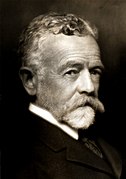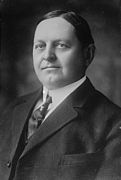United States Senate election in Ohio, 1920
|
|
|||||||||||||||||||||||||||||||
|---|---|---|---|---|---|---|---|---|---|---|---|---|---|---|---|---|---|---|---|---|---|---|---|---|---|---|---|---|---|---|---|
|
|||||||||||||||||||||||||||||||
|
32 of the 96 seats in the United States Senate (as well as special elections) 49 seats needed for a majority |
|||||||||||||||||||||||||||||||
|
|||||||||||||||||||||||||||||||

Results including special elections
Democratic gains Republican gains Democratic holds Republican holds |
|||||||||||||||||||||||||||||||
|
|||||||||||||||||||||||||||||||
Henry Cabot Lodge
(Unofficial)
Republican
Henry Cabot Lodge
(Unofficial)
Republican
The United States Senate elections of 1920 and 1921 were elections for the United States Senate that coincided with the election of Warren G. Harding as President. There was also a special election in 1921. Democrat Woodrow Wilson's unpopularity allowed Republicans to win races across the country, winning ten seats from the Democrats, providing them with an overwhelming 59 to 37 majority. The Republican landslide was so vast that the Democrats failed to win a single race outside the South.
Republicans won two seats that were open from retiring Democrats, one seat from a Democrat who had lost renomination, and they defeated seven Democratic incumbents.
In these special elections, the winner was seated during 1920 or before March 4, 1921; ordered by election date.
In these general elections, the winners were elected for the term beginning March 4, 1921; ordered by state.
All of the elections involved the Class 3 seats.
In this election, the winner was elected in 1921 after March 4.
...
Wikipedia


